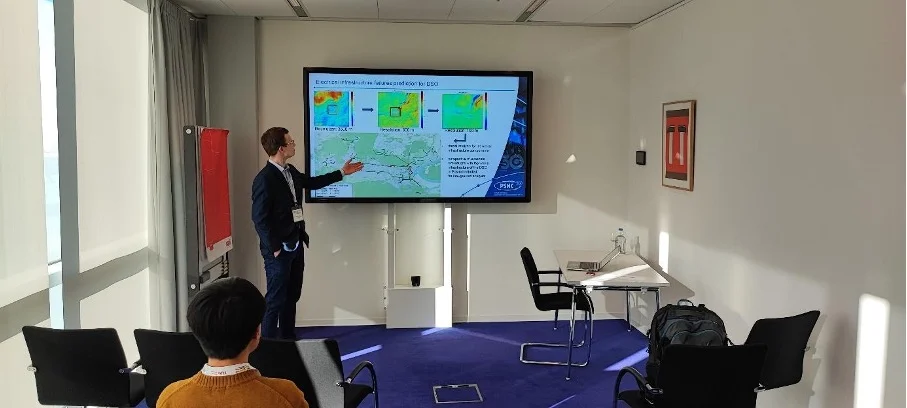
A. Complex-Geometry 3D Computational Fluid Dynamics with Automatic Load Balancing, Fluids | (8(5):147, 2023)
This paper introduces a new open-source code, Xyst (https://xyst.cc). The goal of Xyst is to simulate engineering problems with a production-quality code that is extensible and maintainable, using hardware resources efficiently, even for problems with unpredictable, heterogeneous, and dynamic compute-load distribution. A unique feature of Xyst is its use of the Charm++ runtime system (http://charmplusplus.org) instead of the message-passing interface (MPI) standard. Charm++’s execution model is asynchronous by default, allowing arbitrary overlap of computation and communication. Built-in automatic load balancing enables redistribution of arbitrarily heterogeneous computational load based on real-time CPU load measurement at negligible cost. The runtime system also features automatic checkpointing, fault tolerance, resilience against hardware failure, and supports power-, and energy-aware computation. This paper verifies and validates the numerical method implemented in Xyst as ‘RieCG’, intended for the mathematical modelling of energetic, high-speed, compressible flows, and demonstrates the benefits of automatic load balancing for irregular workloads.
Find the paper here.
Authors: J. Bakosi, M. Constans, Z. Horváth, Á. Kovács, L. Környei, M. Charest, A. Pandare, P. Rutherford, J. Waltz
B. Open-source complex-geometry 3D fluid dynamics for applications with unpredictable heterogeneous dynamic high-performance-computing loads, Computer Methods in Applied Mechanics and Engineering | Volume 418, Part B, 2024
This paper discusses algorithmic aspects and computational performance of the numerical method implemented in Xyst (https://xyst.cc) as ‘RieCG’, intended for the modelling of energetic, high-speed, compressible flows. It also contains multiple verification and validation problems and demonstrates automatic load balancing for unpredictable loads on both shared-, and distributed-memory machines.
Find the paper here.
Author: J. Bakosi
C. Using dispersion models at microscale to assess long-term air pollution in urban hot spots: A FAIRMODE joint intercomparison exercise for a case study in Antwerp | Science of the Total Environment 925 (2024) 171761.
A study conducted in Antwerp, Belgium, compared different modelling approaches to estimate long-term average NO2 concentrations in urban areas with high spatial resolution. Nine modelling teams participated, using various methods including Computational Fluid Dynamics (CFD), Lagrangian, Gaussian, and Artificial Intelligence. The objective was to determine which modelling system is most effective for assessing air quality in complex urban districts, crucial for meeting European ambient air quality directives.
Results showed that all models accurately estimated NO2 concentrations during periods of high pollution. However, Gaussian models lacked detail without incorporating building and street-canyon data. Models considering complex urban geometries (CFD, Lagrangian, and AI) provided better spatial distribution estimates. Steady CFD-RANS simulations of meteorological scenarios yielded results comparable to unsteady simulations over one month.
The SZE team provided unsteady simulations for the comparison exercise using UAP code run on HPC. The comparison provides validation for the pollution spread use case.
Find the paper here.
Authors: F. Martín, S. Janssen, V. Rodrigues, J. Sousa, J.L. Santiago, E. Rivas, J. Stocker,R. Jackson, F. Russo, M.G. Villani, G. Tinarelli, D. Barbero, R. San José, J.L. Pérez-Camanyo, G. Sousa Santos, J. Bartzisi, I. Sakellarisi, Z. Horváth, L. Környei, B. Liszkai, Á. Kovács, X. Jurado, N. Reiminger, P. Thunis, C. Cuvelier



